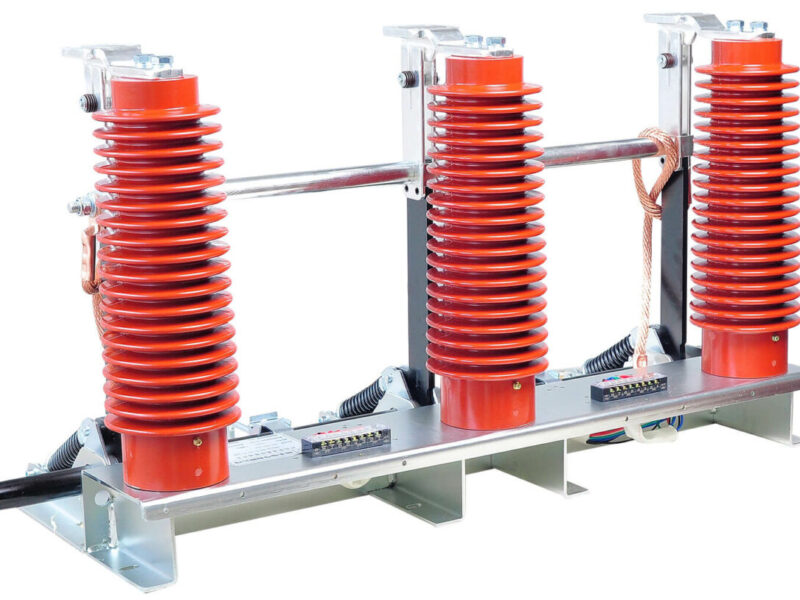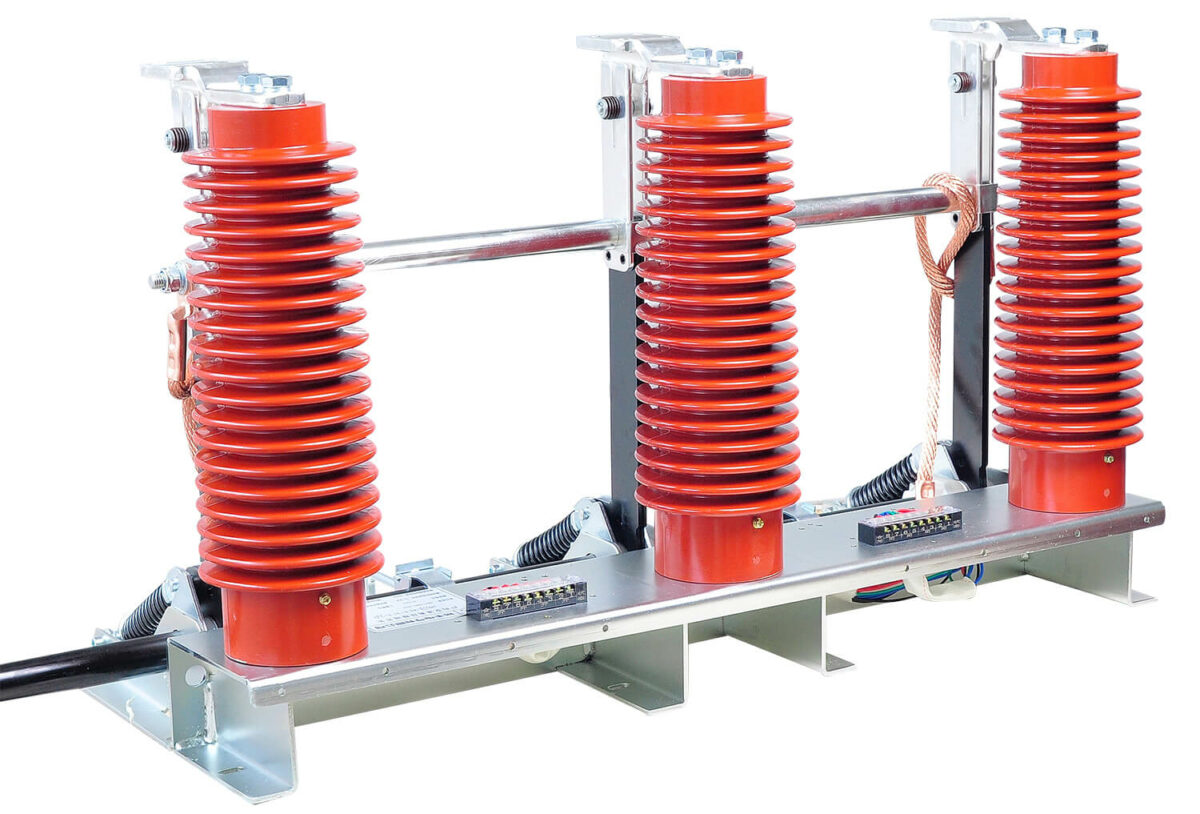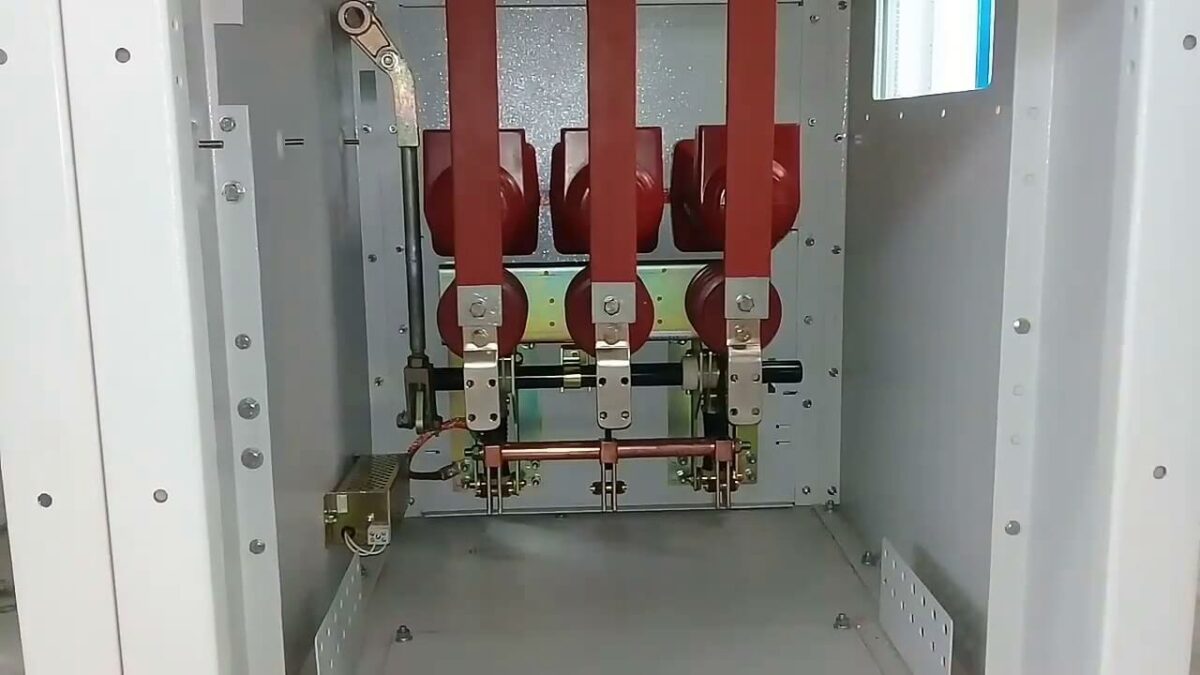
What is an Earthing Switch? A Complete Guide to This Essential Protective Device
Earthing Switch Protective devices are essential components in any power distribution system. Their role is to prevent equipment damage and ensure personnel safety during electrical faults or abnormal conditions. One such crucial device is the earthing switch, which is used in conjunction with switchgear systems to protect circuits and personnel from electrical hazards such as short circuits or residual charges.
1. What is an Earthing Switch?
An earthing switch (also referred to as a grounding switch) is a mechanical device designed to ground parts of an electrical circuit. It does not carry current during normal operation but becomes critical during maintenance or abnormal situations by providing a low-resistance path to earth.
Earthing switches are integrated into medium and high-voltage switchgear—such as circuit breakers and isolators—to discharge residual or induced charges after a circuit is disconnected. This prevents electrical shock and equipment damage.
When a breaker is opened or removed, the adjacent busbar can be automatically grounded via the earthing switch. This ensures that any trapped or induced voltage is safely dissipated.

2. Purpose of the Earthing Switch
The earthing switch plays a variety of roles in power systems:
- Discharges residual voltage from de-energized circuits.
- Protects maintenance personnel by ensuring safe working conditions.
- Prevents fire and equipment damage by grounding fault currents.
- Limits transient overvoltages during restrike earth faults.
- Stabilizes system potential by providing a reference ground.
In substations, it’s essential for grounding high-voltage components during maintenance and can be integrated with automation systems to improve reliability and response time during faults.
3. How Does an Earthing Switch Work?
The device operates with a snap-action mechanism to quickly engage or disengage grounding. Most are interlocked with isolators, ensuring the earthing switch cannot close unless the isolator is open, and vice versa. This mechanical interlock is vital for operational safety.
Earthing switches may be manually operated, motorized, or spring-charged depending on the system design and voltage level.
They are available in open or enclosed designs:
- Open-type: Exposed to the atmosphere, often used in outdoor applications.
- Closed-type: Enclosed within an insulating medium (e.g., SF₆ or oil) for indoor or GIS applications.

4. Types of Earthing Switches
Earthing switches come in several configurations:
4.1 By Voltage Level
- Low-Voltage Earthing Switches: Found in public distribution networks, they ensure that metallic parts do not exceed a safe voltage (typically 50V) during faults.
- High-Voltage Earthing Switches: Used in substations and industrial systems, where they focus on fault containment and system stability rather than public safety.
4.2 By Application
- Maintenance Earthing Switch (ES): Provides grounding for de-energized equipment during scheduled maintenance.
- Fault-Closing Earthing Switch (FES): Designed to close on short-circuit current during fault events and trigger protection systems.
4.3 By Mechanism
- Manual Earthing Switch
- Motorized or Electrically Operated Switch
- Spring-Actuated (Snap Action) Switch
5. High-Speed Earthing Switch (HSGS)
A High-Speed Earthing Switch (HSGS) is specially designed to rapidly ground circuits during fault conditions. Often installed in GIS systems or on transmission lines, HSGS has a high making capacity and can handle large short-circuit currents (e.g., 80kA at 110kV, 125kA at 220kV).
These switches are:
- Operated by spring or hydraulic mechanisms
- Used to initiate relay protection
- Critical in systems where fast isolation and grounding are required to prevent arc damage
6. Difference Between Standard Earthing Switch and High-Speed Earthing Switch
| Feature | Standard Earthing Switch | High-Speed Earthing Switch (HSGS) |
|---|---|---|
| Operation | Manual or slow-acting | Rapid response with snap mechanism |
| Function | Maintenance grounding | Fault response and induced current suppression |
| Location | Near isolators or breakers | On line side of outgoing feeders |
| Use Case | Planned outages | Fault clearance and fast grounding |
7. Integration with Circuit Breakers and Isolators
In RMU and GIS systems, earthing switches are interconnected with circuit breakers and isolators. The correct sequence of operations must be followed during switching to ensure safety and avoid damage:
- Open the circuit breaker.
- Operate the isolator.
- Close the earthing switch to ground the circuit.
This ensures that any remaining energy is safely dissipated before maintenance begins.
8. Symbol of an Earthing Switch
In electrical diagrams, the earthing switch is typically represented by a grounding symbol connected to a mechanical switching symbol. The exact symbol may vary depending on IEC or ANSI standards, but generally includes a ground line and a pivoting contact to indicate mechanical operation.

9. Conclusion
The earthing switch is a critical safety and protective device in modern power distribution systems. Whether in low-voltage residential panels or high-voltage GIS substations, it plays a vital role in:
- Safely grounding de-energized circuits
- Protecting personnel and equipment
- Ensuring operational reliability
From simple mechanical devices to fast-acting HSGS units, understanding their function, types, and application helps engineers design safer and more efficient electrical systems.
Professiona Switchgear supplier and manufacturer
- Zhejiang GONGSHUN Electrical Co.,Ltd (electricgs.com), Our company was founded in the late 1990s, specializing in the production of inflatable cabinets, SF6 inflatable cabinets, and various high and low voltage complete sets of electrical equipment. It has multiple subsidiaries under its jurisdiction, including high-voltage load switch branch, high-voltage circuit breaker branch, high-voltage fuse branch, and technology development branch.Our technical expertise, comprehensive product portfolio and long-term rich experience are helping many customers in need to solve their power problems. We’re happy to help at any time. Whether you need application product advice or technical assistance, our global service team is committed to providing you with the right support. For more technical information about medium voltage earthing switch, feel free to contact us, send an email to gongshun@electric-cn.com
- Our company specializes in producing 12KV-40.5KV series high-voltage electrical products: FZN58, FLN48, FLN36, FZRN25, FZN21, FN18, ZFN16, FN12, FN8, FN7, FN5, XRNT, XRNP, VS1, ZN28, ZW8, ZW32, JN15, GN19, GN22, GN24, GN30, CLXGN15-12, HXGN □ -12, DXG-12 (L), DFW □ -12 high-voltage cable branch box, CLXGN □ -12 (SF6) series inflatable cabinet 12KV and 35KV cable accessories, etc; CLVXP-12 indoor AC high voltage fixed switchgear, CL-SIS-12 compact solid insulated ring main unit, professional assembly Schneider SC6 (SF6) series load switchgear, ABB produced SFG (SF6) series load switchgear and other series products; Distribution and agency of high-voltage load switches and inflatable cabinets produced by Schneider Electric and ABB; Siemens produces the 3AJ1 series of indoor medium voltage vacuum circuit breakers and other related products. The company has a complete range of products and has been operating safely on domestic and international power grids for a long time, receiving unanimous praise from both new and old users. Among them, multiple products such as FZRN25, FN12, FLN36-12, XRNT-12 have been exported to various countries and regions in East Asia, South Asia, Southeast Asia, Africa, and the United States.
